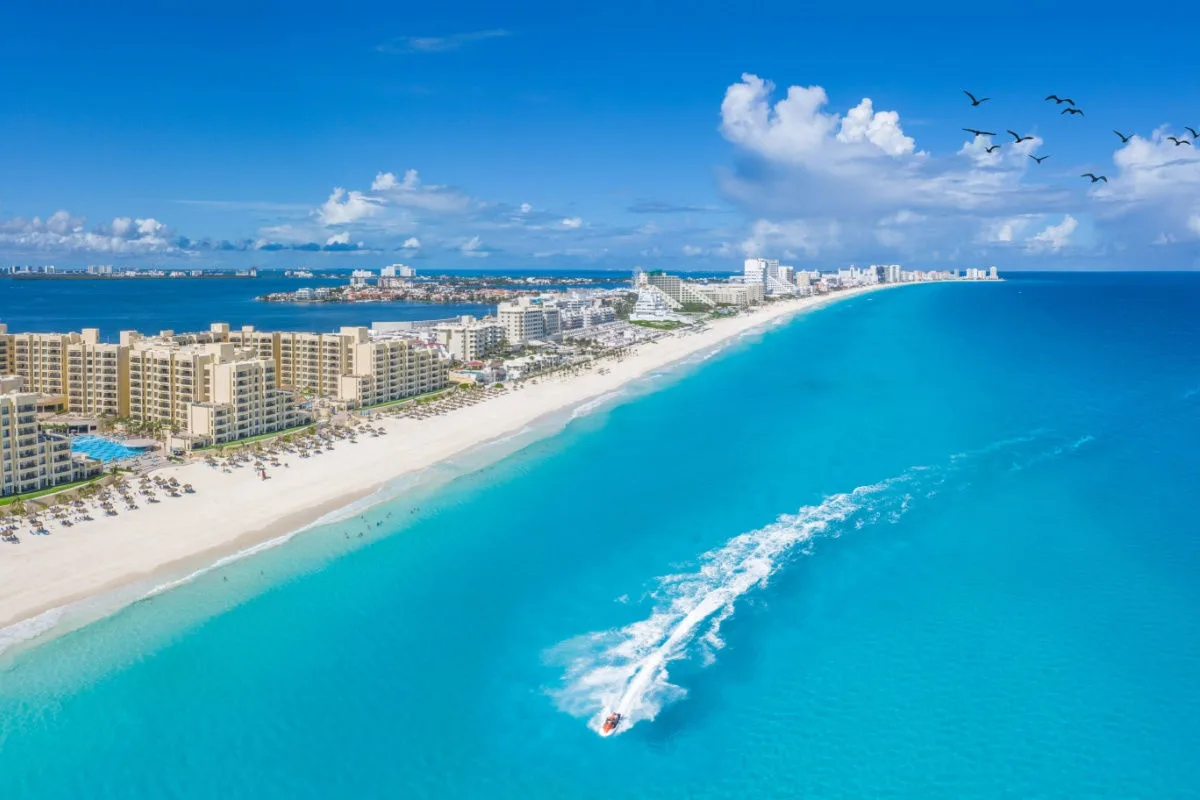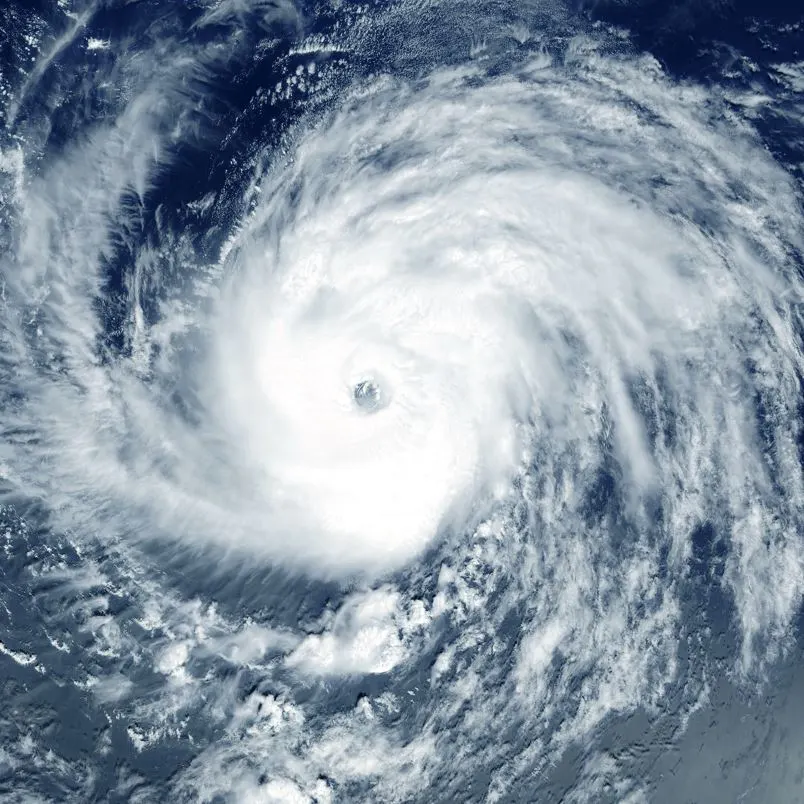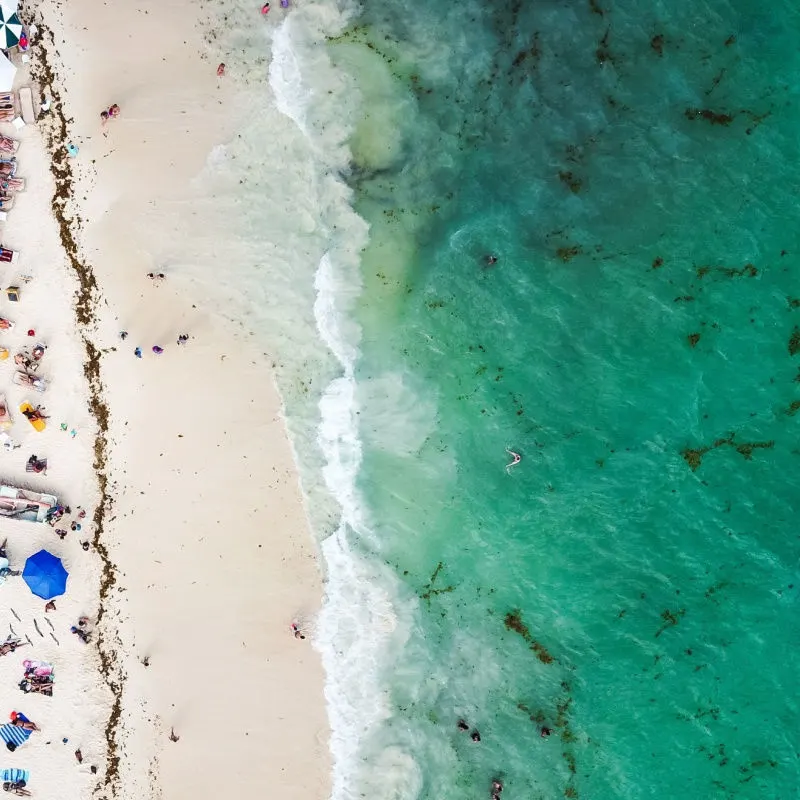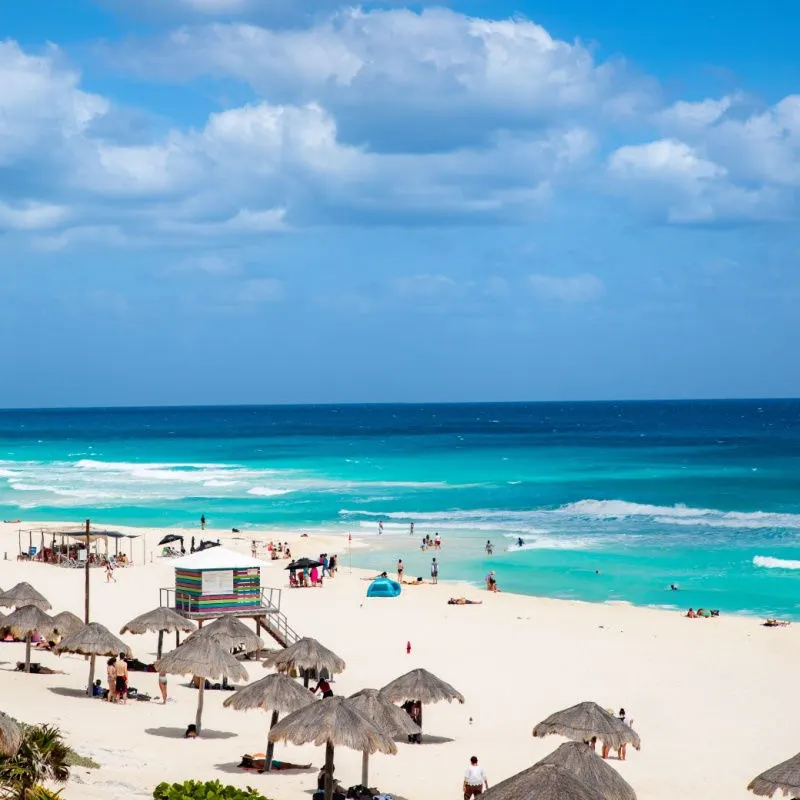Cancun’s beaches are currently seeing significant amounts of erosion following the intense effects of Hurricane Beryl, which swept over the city several weeks ago.
Despite causing only minor damage to buildings in the area, the Category 2 hurricane swept away tons of sand from Cancun beaches, diminishing some sections of the city’s shoreline by as much as 10 meters.

But experts say local beaches are slowly making a recovery, with sand levels expected to reach pre-Beryl levels by the end of the year.
With thousands of travelers flocking to Cancun beaches daily this summer, here’s what visitors need to know about erosion in the coastal resort city.

Beaches Shrink By Up To 10 Metres In Cancun Following Hurricane Beryl
Hurricane Beryl was the first major hurricane to make landfall in Cancun and the Mexican Caribbean just several weeks ago.
The powerful tropical storm was unusual in that it hit the region very early into the hurricane season, a sign that more intense systems could form over the Atlantic during the 2024 hurricane period.
Although Cancun has made a full recovery following the hurricane, the lingering effects of the storm can still be seen across the city’s beaches.

With wind speeds of up to 220 kilometers per hour, Hurricane Beryl swept up tons of sand from Cancun’s coastline, with rain, waves, and ocean currents contributing to intense erosion.
According to environmental experts, some beaches in Cancun’s resort zone have shrunk by between 7 to 10 meters. As a consequence, the water level has increased, with waves reportedly reaching lifeguard towers and other beach facilities.
Erosion is currently affecting the entirety of the Mexican Caribbean coastline, which saw strong winds, heavy rain, and large waves batter beaches during the Category Two hurricane.

Erosion is currently benign and reported across all of Cancun’s main beaches, including Playa del Nino, Chac Mool, and Ballenas, among others.
Despite the alarming news, Cancun’s beaches remain open to the public, with only minor interruptions reported in small sections of the shoreline. That being said, return travelers will have to contend with slightly thinner beaches compared to previous years.

Cancun and Isla Mujeres beaches have been dealing with erosion for some time already, with wind and smaller tropical storms carrying sand away from the shoreline.
Significant progress was made in recovering sand levels before Hurricane Beryl made landfall in Cancun, but the hurricane interrupted recovery efforts.

In a media interview, the head of Canucn’s environmental department, Justo Miranda Rocha, said that hurricane Beryl had effectively reverted sand levels to those seen earlier this year when significant erosion first became an issue.
Cancun Beaches To Fully Recover Sand Levels By End Of 2024
Despite the surprising effects of erosion on Cancun beaches, officials are hopeful that the city’s coastline will recover sand levels by the end of the year.
Meteorologists say that Cancun is experiencing a period of cyclical erosion, with periods of erosion followed by natural beach nourishment.

The first signs of recovery are already visible throughout Cancun, as sand levels gradually improve. Experts say that for now, no concerted efforts are needed to boost sand levels, with beaches expected to recover naturally with waves and ocean currents carrying more sand to the coastline.
For now, travelers can look forward to splendid beach conditions in Cancun and the Mexican Caribbean, with meteorologists expecting only minimal amounts of sargassum seaweed this summer.
Plan Your Next Cancun Vacation:
Traveler Alert: Don’t Forget Travel Insurance For Your Next Trip!
Choose From Thousands of Cancun and Riviera Maya Hotels, Resorts and Hostels with Free Cancellation On Most Properties
↓ Join the community ↓
The Cancun Sun Community FB group has all the latest travel news, conversations and tourism Q&A’s for the Mexican Caribbean

Subscribe to our Latest Posts
Enter your email address to subscribe to The Cancun Sun’s latest breaking news affecting travelers, straight to your inbox.
